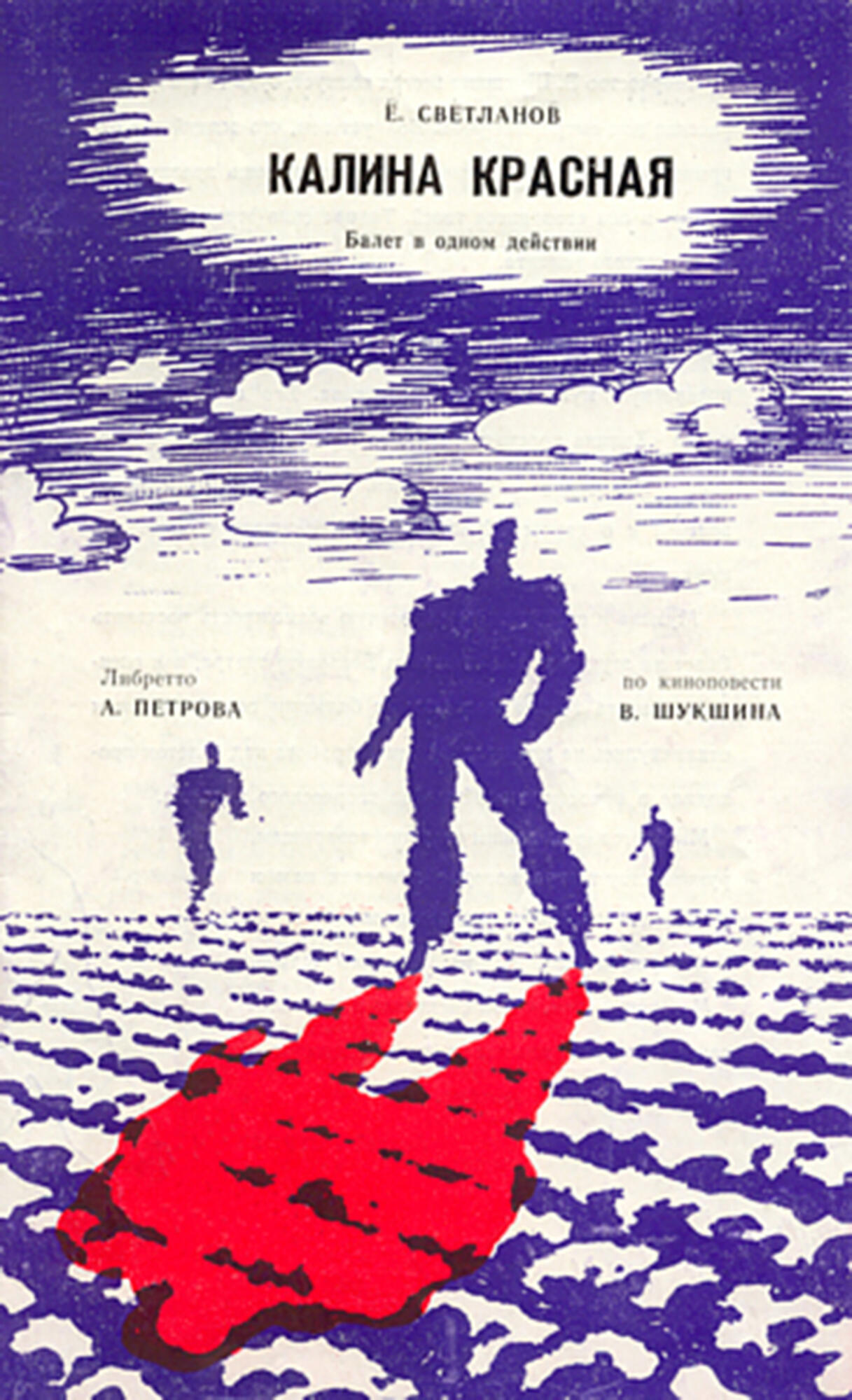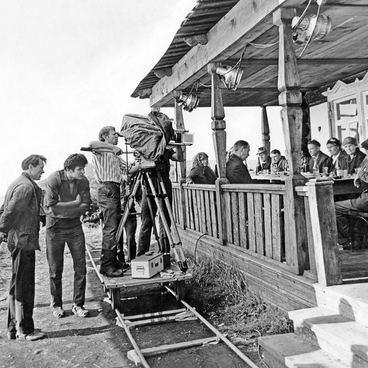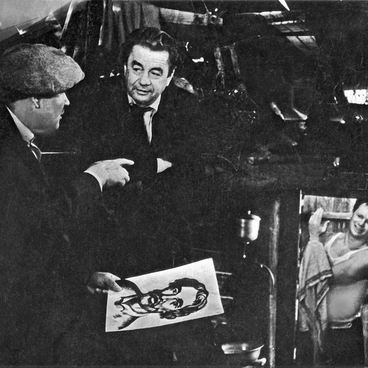The Red Snowball Tree, a one-act ballet, was based on Vasily Shukshin’s story bearing the same name. Composer Evgeny Svetlanov wrote the music, Andrei Petrov was the choreographer and libretto author, and Igor Lemeshev was the artist. The main parts were performed by Galina Tesyolkina, Vyacheslav Yelagin, Alexander Lazarev, Vladimir Goryunov, Andrei Petrov, Viktor Barykin, and others. The premiere took place in 1978 at the Moscow Bolshoi Theatre.
Once Andrei Petrov, a soloist at the Bolshoi Theatre and a recent graduate of GITIS, the Russian Institute of Theatre Arts, heard the Red Snowball Tree orchestral poem. The music astounded him. Pure, limpid and dramatically tense, it seemed to suggest the orchestral score of the future ballet. Petrov wrote the libretto at one go, within just a few days. As he was training with the chief ballet master of the Bolshoi Theatre, Yuri Grigorovich, at the time, Petrov came to him with the idea of staging a ballet, and Grigorovich immediately agreed. The performance wasn’t in the theatre’s annual plan, so its success depended on its participants’ determination. As they recalled, they had to snatch every free minute for rehearsals.
On the eve of the dress rehearsal, the performer of Egor Prokudin’s role, Vyacheslav Yelagin, fell ill. In just a few rehearsals, Alexander Lazarev mastered the challenging title role. Then another misfortune happened: Vladimir Goryunov, the performer of Chyorny’s role, broke his finger, so two days before the premiere a new dancer had to be introduced into the performance.
The ballet was different from the film. For example, the theatre stage featured Lyubasha as a naïve young girl rather than a strong woman. Yet she had the same purity, closeness to nature, and love for the earth. The performer, Galina Tesyolkina, perceived her role really accurately.
After the premiere, critics noted: ‘Perhaps not everything Petrov had dreamed and thought about worked out in the play. In some fragments, the director illustrates the plot superficially, sugar-coating the criminal world and somewhat simplifying the conflict between it and Egor. But the greatest merit of this one-act ballet is that it glorifies Russian nature, Russian land and its unflagging strength, and the main hero returning to it like Antaeus.’
Once Andrei Petrov, a soloist at the Bolshoi Theatre and a recent graduate of GITIS, the Russian Institute of Theatre Arts, heard the Red Snowball Tree orchestral poem. The music astounded him. Pure, limpid and dramatically tense, it seemed to suggest the orchestral score of the future ballet. Petrov wrote the libretto at one go, within just a few days. As he was training with the chief ballet master of the Bolshoi Theatre, Yuri Grigorovich, at the time, Petrov came to him with the idea of staging a ballet, and Grigorovich immediately agreed. The performance wasn’t in the theatre’s annual plan, so its success depended on its participants’ determination. As they recalled, they had to snatch every free minute for rehearsals.
On the eve of the dress rehearsal, the performer of Egor Prokudin’s role, Vyacheslav Yelagin, fell ill. In just a few rehearsals, Alexander Lazarev mastered the challenging title role. Then another misfortune happened: Vladimir Goryunov, the performer of Chyorny’s role, broke his finger, so two days before the premiere a new dancer had to be introduced into the performance.
The ballet was different from the film. For example, the theatre stage featured Lyubasha as a naïve young girl rather than a strong woman. Yet she had the same purity, closeness to nature, and love for the earth. The performer, Galina Tesyolkina, perceived her role really accurately.
After the premiere, critics noted: ‘Perhaps not everything Petrov had dreamed and thought about worked out in the play. In some fragments, the director illustrates the plot superficially, sugar-coating the criminal world and somewhat simplifying the conflict between it and Egor. But the greatest merit of this one-act ballet is that it glorifies Russian nature, Russian land and its unflagging strength, and the main hero returning to it like Antaeus.’



